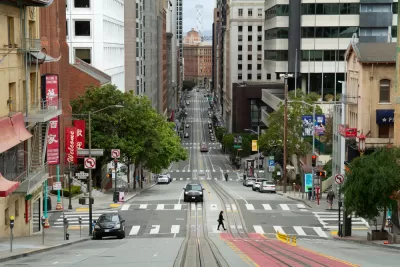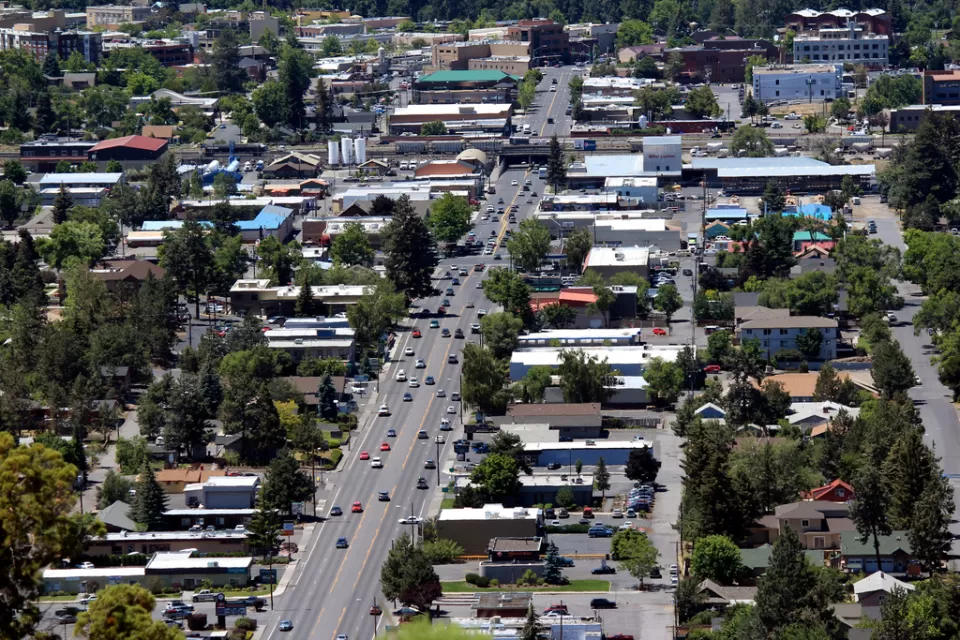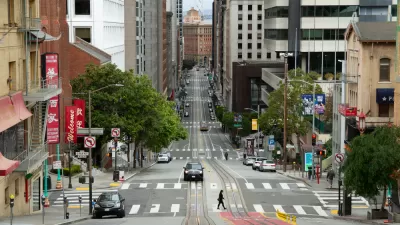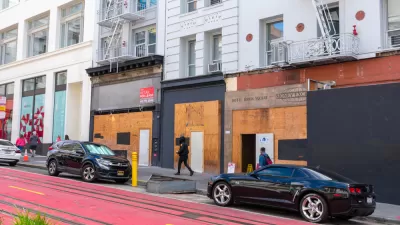The fiscal toll of the pandemic is only beginning to reveal itself. The challenges presented to growing office vacancy rates are not unique to San Francisco.

A new analysis published by the office of San Francisco Chief Economist Ted Egan estimates the property tax revenue risk of ongoing office vacancies in the city at $200 million by 2028.
Romy Varghese shares news of the analysis for Bloomberg, explaining that office vacancies in the traditional tech hub could rise to as much as 31 percent in the fourth quarter of next year. According to an October article on Socketsite, San Francisco reached 23 percent office vacancies in the second quarter of 2022.
“Commercial property values would fall, and that would mean less revenue for the city from property taxes. In the short-term, the risk is lessened by long-term leases and the fact that under a California law known as Proposition 13, valuations for property tax purposes are often well below market prices. That cushions municipalities during downturns,” writes Varghese.
The office sector is responsible for 18 percent of the city’s revenues, according to Bloomberg.
San Francisco has emerged as the poster child of cities faced with the fiscal consequences of new work from home trends in the wake of the Covid-19 pandemic, but it’s not the only city faced with similar concerns in the United States, though the office vacancy equation varies by the location.
FULL STORY: San Francisco Sees Risk of Lost Revenue as Remote Work Prevails

Maui's Vacation Rental Debate Turns Ugly
Verbal attacks, misinformation campaigns and fistfights plague a high-stakes debate to convert thousands of vacation rentals into long-term housing.

Planetizen Federal Action Tracker
A weekly monitor of how Trump’s orders and actions are impacting planners and planning in America.

Chicago’s Ghost Rails
Just beneath the surface of the modern city lie the remnants of its expansive early 20th-century streetcar system.

Bend, Oregon Zoning Reforms Prioritize Small-Scale Housing
The city altered its zoning code to allow multi-family housing and eliminated parking mandates citywide.

Amtrak Cutting Jobs, Funding to High-Speed Rail
The agency plans to cut 10 percent of its workforce and has confirmed it will not fund new high-speed rail projects.

LA Denies Basic Services to Unhoused Residents
The city has repeatedly failed to respond to requests for trash pickup at encampment sites, and eliminated a program that provided mobile showers and toilets.
Urban Design for Planners 1: Software Tools
This six-course series explores essential urban design concepts using open source software and equips planners with the tools they need to participate fully in the urban design process.
Planning for Universal Design
Learn the tools for implementing Universal Design in planning regulations.
planning NEXT
Appalachian Highlands Housing Partners
Mpact (founded as Rail~Volution)
City of Camden Redevelopment Agency
City of Astoria
City of Portland
City of Laramie





























